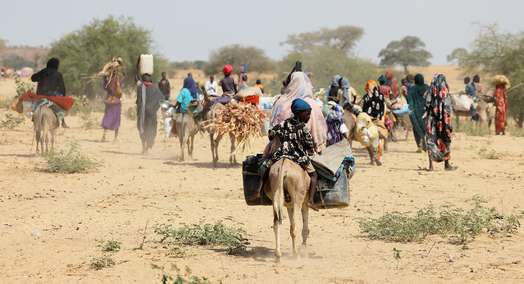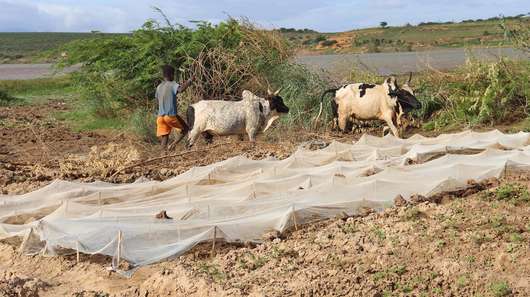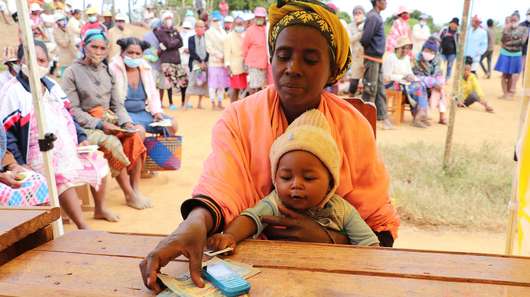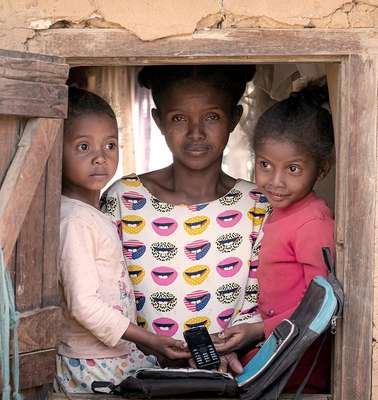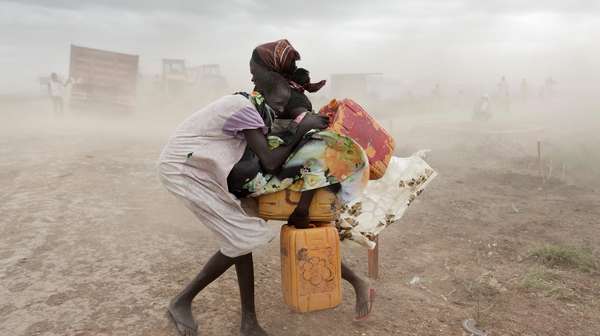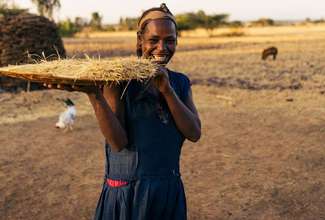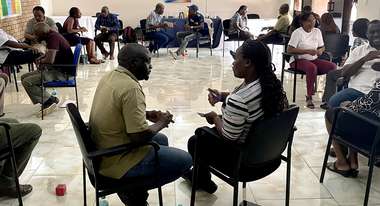The effects of climate change are a central cause of hunger, malnutrition, and poverty.
Anticipatory Humanitarian Action
Act and intervene based on forecasts and predictions before crises and disasters lead to hunger, destruction and death.
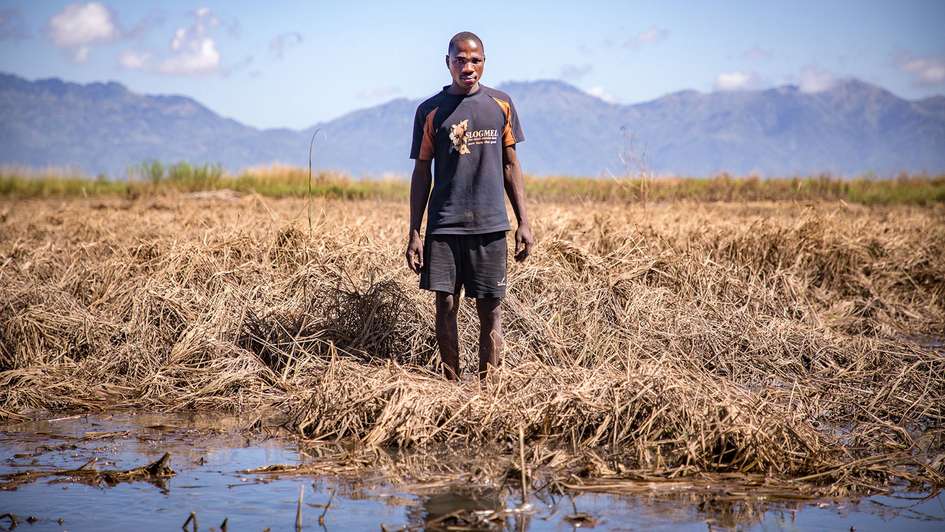
Every year, humanitarian needs are rising, with over 360 million people in need of assistance. Some of these people have been affected by protracted crisis and cascading risks with no substantial improvement in the near future in sight.
However, humanitarian action usually occurs once many people have already experienced devastating losses. Welthungerhilfe (WHH) champions a different approach – by taking proactive action. Based on forecasts, predictions and intervening before crises and disasters cause hunger, property damage, and deaths.
Anticipatory action – but what is the meaning?
Anticipatory Action is an innovative approach to humanitarian action. It means that we aim to support people by protecting their lives and livelihoods before an imminent disaster causes damage. Through detailed risk and threat analyses, we can predict extreme weather events with increasing accuracy and, based on these early warnings, implement action before a hazard unfolds its full impact. This enables people to make timely decisions on matters essential to their survival in the short time between the early warning and the onset of a disaster.
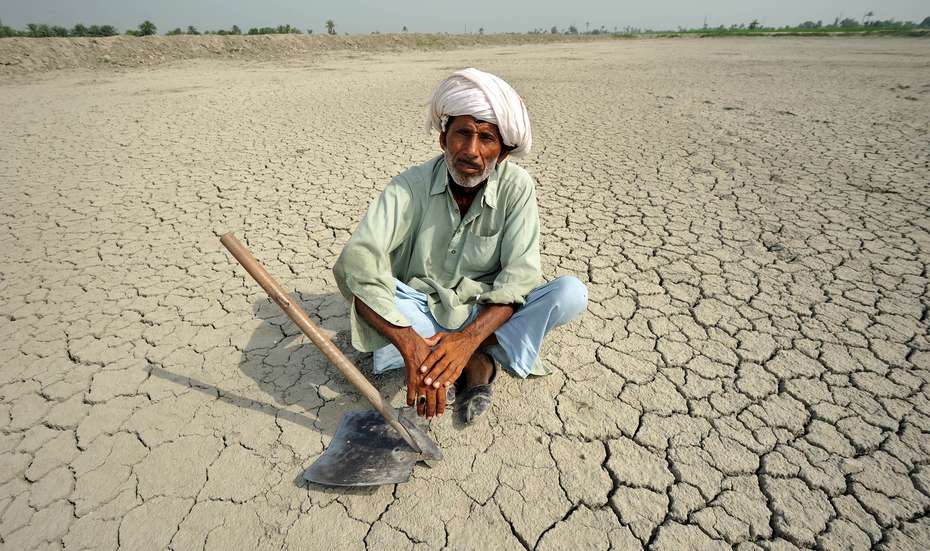
Anticipatory Humanitarian Action through scientific data
Based on comprehensive data analyses, WHH works with scientific partners to adapt and utilize forecasting models to predict disasters and their effects on the local population. For example, analyzing past droughts and their effects can help identify local risk factors and early warning indicators can be recorded and monitored (for droughts, for example, an indicator used is the soil moisture content for crops during the growing season). Historical drought analyses make it possible to determine a critical threshold that heralds a drought.
If this threshold is crossed, it triggers an early warning, which automatically puts predetermined contingency plans into motion and releases pre-agreed funds for early action interventions. These contingency plans, called Early Action Protocols (EAP’s) are established in advance of a crisis to outline the actions that can be taken to prevent or mitigate the humanitarian impact.
These EAP’s also encompass strategic preparations, coordination mechanisms, and the allocation of roles and responsibilities necessary for executing early interventions. The necessary funding is pre-agreed with donors like the German Federal Foreign Office. This process ensures rapid and efficient action even before a humanitarian disaster can develop.
Implementation of Anticipatory Action – step by step
- Learning from previous disasters and recognizing warning signs early on
- Define a threshold at which anticipatory action is needed (for example, a certain level of soil dryness in a region that has previously experienced severe droughts)
- Create an Early Action Protocol and secure necessary funding for it from donors
- If the threshold is crossed: implement early actions to protect people from food insecurity and hunger (for example, through cash transfers, the distribution of food parcels, or sheltering in safe houses, for example, in the event of impending floods)
- Protect people from long-term negative consequences (for example, ensuring that children continue to have safe access to food, education, and health care)
- Evaluate consequences of extreme events that may have occurred and the results of anticipatory measures and incorporate them into the next assessment
WHH is the first German non-governmental organization to pursue Anticipatory Action, having implemented AHA pilots since 2017. These anticipatory approaches to humanitarian action are fundamental to WHH’s global work. In conjunction with capacity-sharing measures and with disaster risk reduction and emergency preparedness, this approach helps us jointly with the communities at risk to reduce the impact of crises and disasters. Thereby losses and damages and negative effects on affected populations are mitigated.
"WAHAFA": Welthungerhilfe Anticipatory Humanitarian Action Facility
Through the Welthungerhilfe Anticipatory Humanitarian Action Facility (WAHAFA), WHH wants to join forces with other non-governmental organizations to advance this humanitarian paradigm shift towards increased anticipatory thinking and acting. The WAHAFA programme aims to identify and analyze disaster risks, support the development of Anticipatory Action mechanisms, and secure funding to implement these mechanisms.
The WAHAFA will facilitate the active participation of German NGOs and their local humanitarian partners in Anticipatory Action by facilitating access to all needed key pillars. Participating organizations will be invited to join the capacity-sharing advances and receive budgetary and conceptual support in building scientific hazard forecasting models behind the trigger mechanisms and community-based and risk-informed Early Action Protocols, which outline appropriate measures to take in case of an impending hazard. These are further linked to guaranteed funding of pre-agreed early actions in case of triggering the scientific forecasting system.
Insured against the risks of climate change
As part of the anticipatory action approach, the provision of funds to finance disaster response plans is supplemented by climate risk insurance. This involves predetermined insurance settlements being paid out when early warning indicators reach contractually stipulated, critical thresholds.
However, due to the high insurance contribution payments required, insurance-based approaches are used only for relatively rare extreme droughts and emergencies. As a member of the Start Network and an active participant in its committees and expert panels, WHH supports the framework of the African Risk Capacity (ARC) Replica insurance approach.
Anticipatory Action: Efficient use of funds
Anticipatory Action can be one of the most efficient ways of providing assistance – because the fewer people who suffer the consequences of a disaster, the fewer people have to be helped out of acute need. This saves more lives and, at the same time, saves money, which in turn can be channeled into further humanitarian projects. If NGOs anticipate at least 25% of all disasters with Anticipatory Action in the future, this would mean an immense gain in efficiency.
However, only about 2% of the humanitarian funds made available by donor countries are flowing into the still reasonably new field of Anticipatory Action. The already scarce money for humanitarian action is urgently needed to support acute needs. By expanding Anticipatory Action, we want to help people protect themselves from disasters and thus help break the vicious circle of ever-increasing humanitarian needs.


